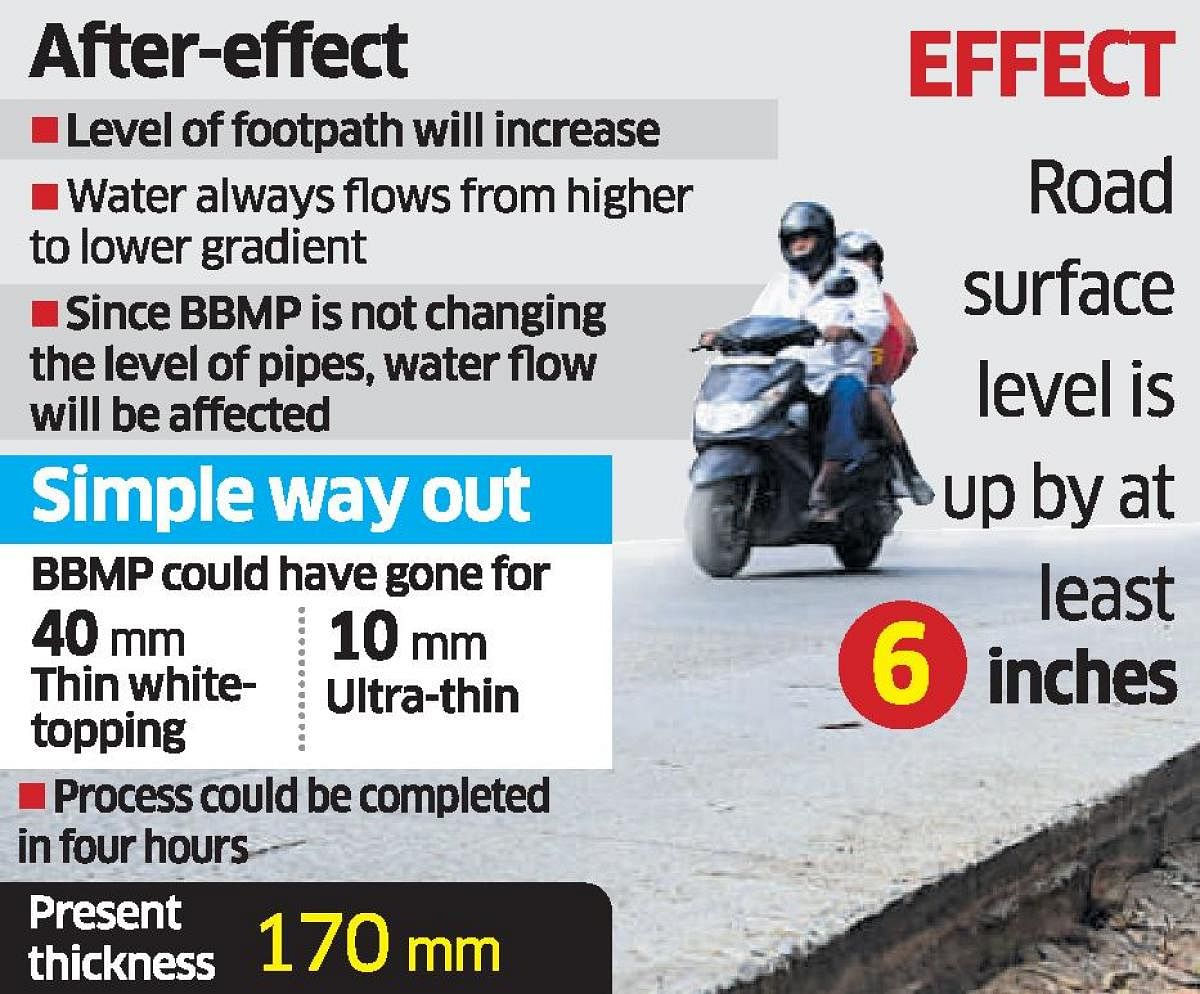The BBMP's ambitious project to white-top several roads across the city could lead to clogged drains and flooding during the monsoon.
Though white-topped or cement roads last longer than tarred roads, the unscientific approach adopted by the BBMP has led to an increase in road surface levels by at least by six inches.
As a result, some residents and commercial establishments are forced to construct steps to climb down to entire their premises.
Road engineering expert M N Srihari told DH, "The level of footpath will increase when the surface level of the road goes up, as the flow of water is always from a higher gradient to a lower gradient. If the surface level of the footpath increases, then the flow of water will be affected as the civic body is not changing the level of pipes."
Srihari also said that the BBMP could have considered thin white-topping or ultra-thin white topping. "The thickness of thin white-topping would be about 40 mm and ultra-thin 10 mm. There is also a technology to complete the process within four hours," he said.
The thickness of roads in the current project is 170 mm.
Urban evangelist V Ravichander said that the BBMP should have undertaken surface milling of roads before beginning the project.
"They may have milled roads in some parts but definitely not all roads. If they mill the road before laying concrete blocks, this will prevent the surface level from increasing to some extent," said Ravichander.
The BBMP officers, who are implementing the project, claim that the increase in the surface level would not affect people much.
"Once concretisation is over, we will asphalt the road and the difference in the surface level will not be seen," said a senior BBMP official.
Deccan Herald is on WhatsApp Channels| Join now for Breaking News & Editor's Picks
